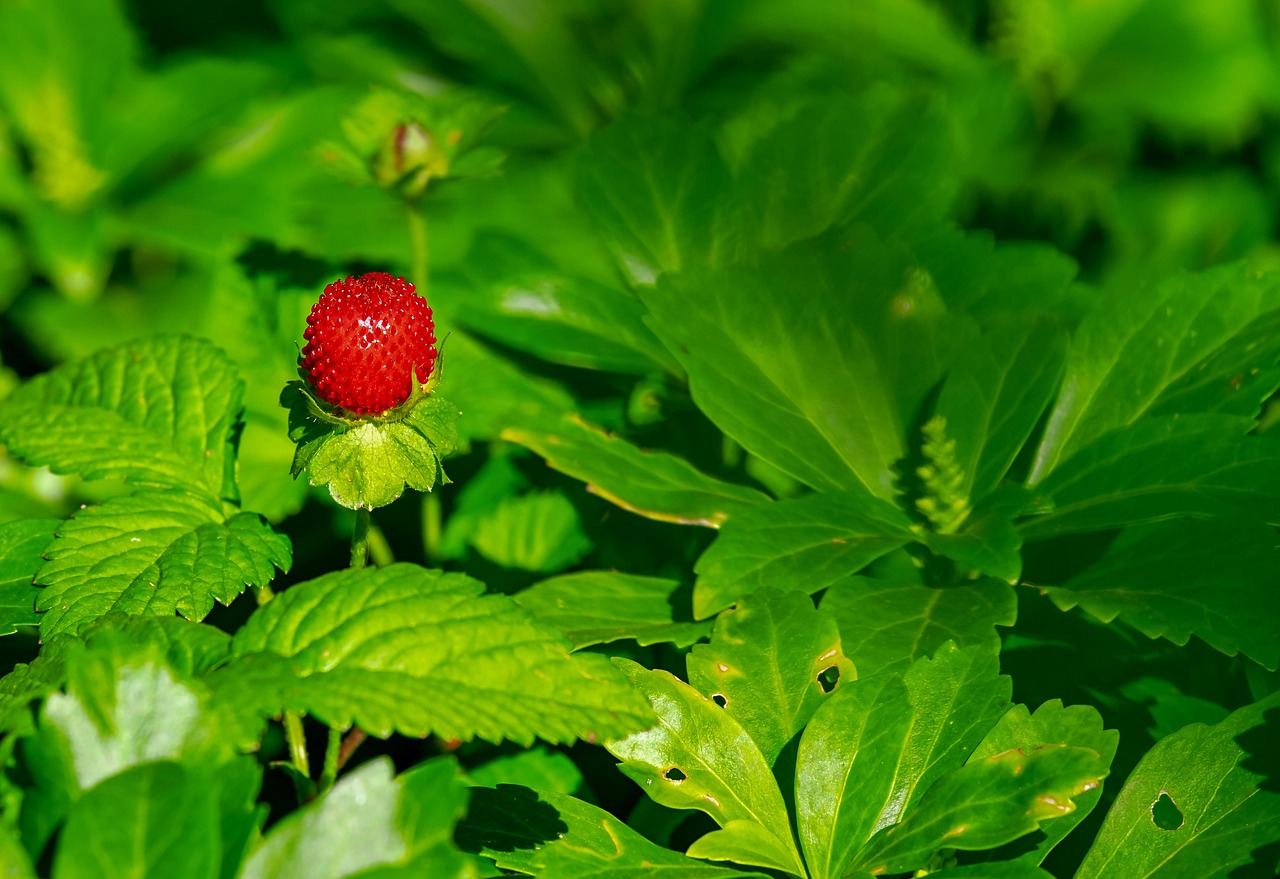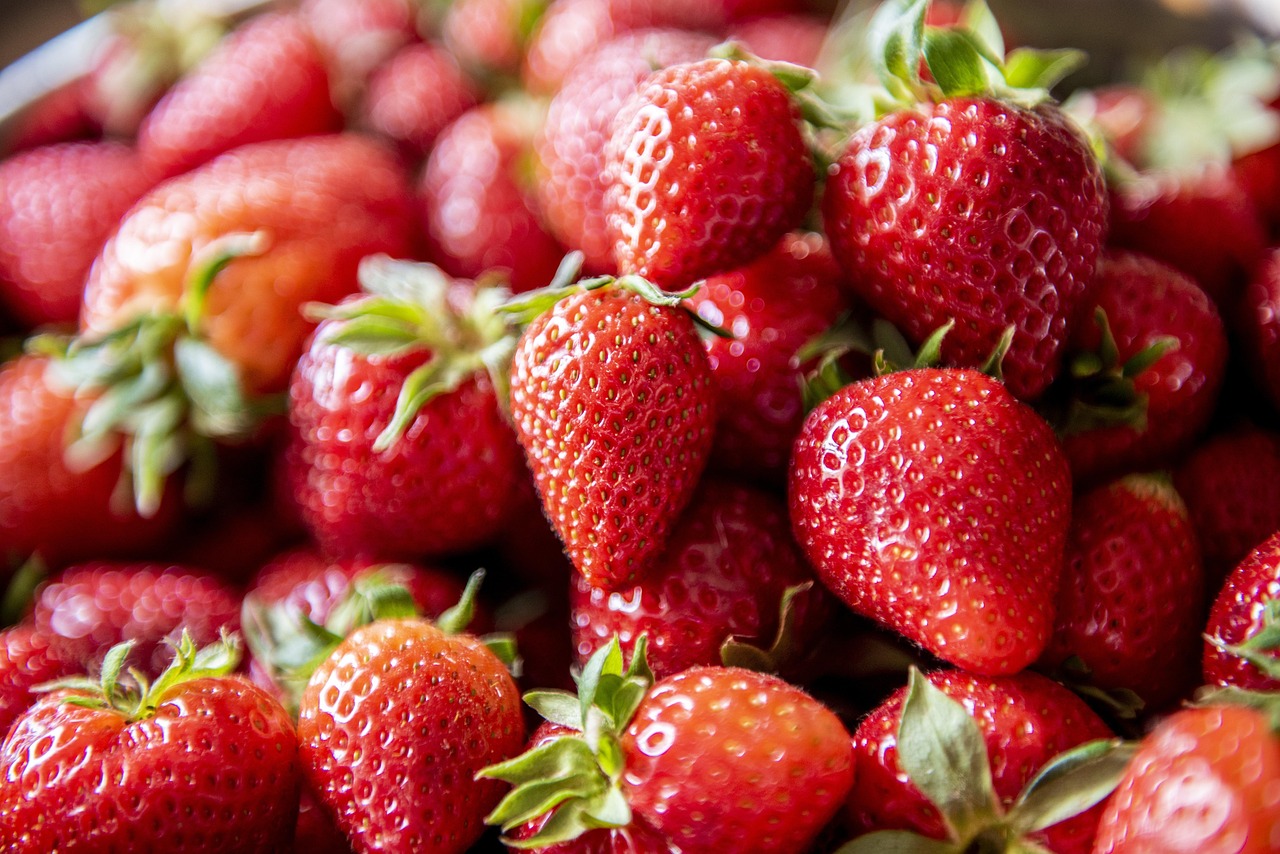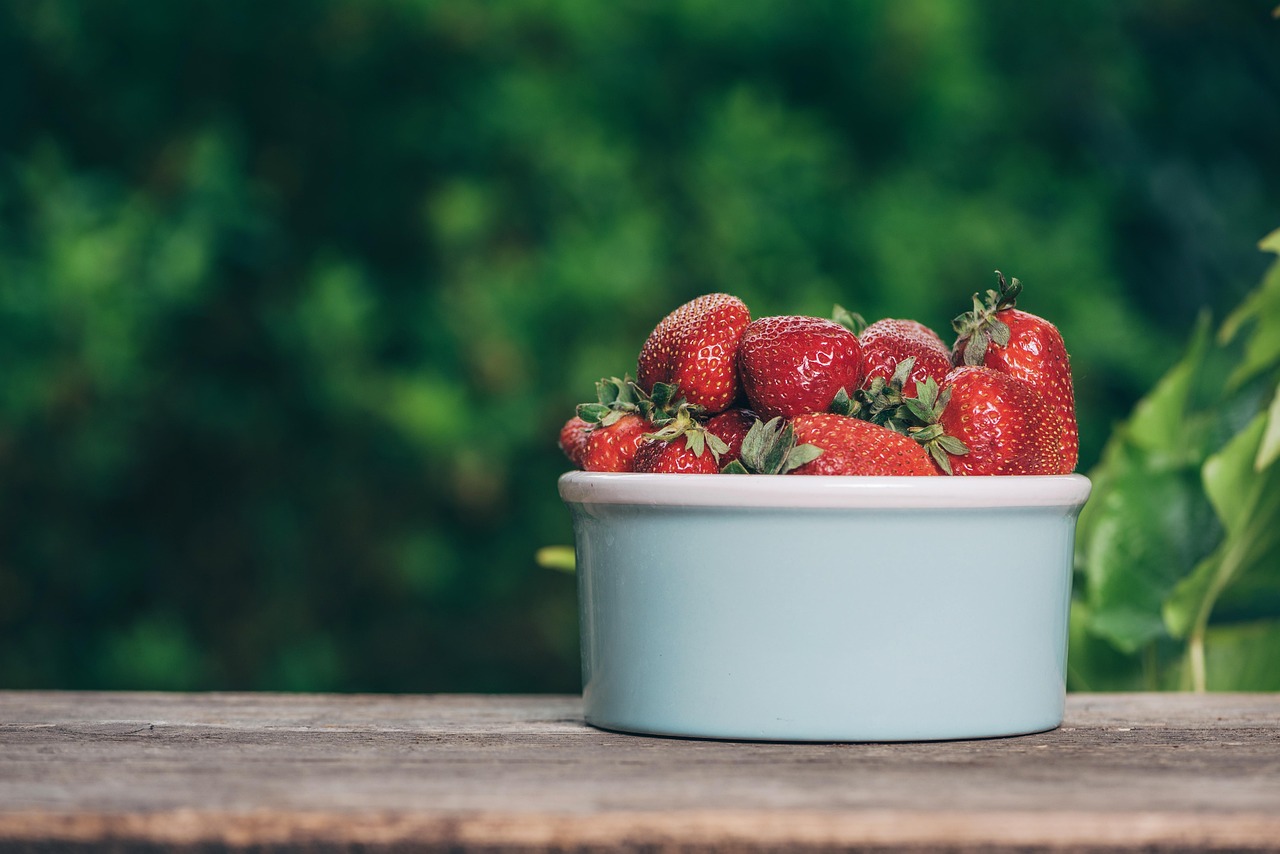Brown leaves on strawberry plants can indicate various issues, such as nutrient deficiencies, environmental stress, pest infestations, or diseases. Identifying the underlying cause is essential for effective management and restoring plant health.
Strawberry plants are a popular choice for home gardens and commercial farming due to their delicious fruit and relatively easy cultivation. However, gardeners often encounter challenges, one of which is the browning of leaves. This condition can be alarming as it not only affects the aesthetic appeal of the plants but can also hinder their growth and fruit production.
Understanding the causes of brown leaves is crucial for any gardener looking to maintain healthy strawberry plants. Several factors can contribute to this issue, including incorrect watering practices, poor soil quality, and exposure to pests or diseases. By recognizing these problems early, gardeners can take the appropriate steps to remedy the situation.
Common Causes of Brown Leaves on Strawberry Plants

There are several reasons why strawberry leaves may turn brown. Identifying these causes is the first step in finding effective solutions. Below are some common causes associated with brown leaves:
- Nutrient Deficiencies: Lack of essential nutrients like nitrogen, potassium, or magnesium can lead to brown leaf edges or spots.
- Water Stress: Both overwatering and underwatering can cause leaf discoloration. Overwatering can lead to root rot, while underwatering stresses the plant.
- Pest Infestations: Pests such as aphids and spider mites can damage leaves, resulting in browning.
- Diseases: Fungal infections and bacterial diseases can also manifest through browning leaves.
- Environmental Stress: Extreme temperatures, either hot or cold, can lead to leaf scorch or browning.
Addressing these issues quickly helps restore the plants’ health and vitality. In many cases, the problems can be mitigated with simple changes to care routines.
Nutrient Deficiencies
Nutrient deficiencies are among the most common reasons for brown leaves on strawberry plants. Each nutrient plays a specific role in plant health, and a lack of any one can lead to symptoms that gardeners should be aware of. A brief overview of key nutrients is provided in the following table:
| Nutrient | Symptoms of Deficiency |
|---|---|
| Nitrogen | Yellowing leaves, stunted growth |
| Potassium | Browning leaf edges, weak stems |
| Magnesium | Interveinal chlorosis (yellowing between veins) |
To combat nutrient deficiencies, gardeners should consider soil testing to determine nutrient levels. Based on the results, they can amend the soil with organic fertilizers or specific nutrient supplements to address any imbalances.
Understanding how to care for strawberry plants properly can prevent many issues related to browning leaves. Regular monitoring and timely interventions are key to maintaining plant health and ensuring a bountiful harvest.
Watering Practices and Their Impact
Watering is a critical component in maintaining healthy strawberry plants. Both overwatering and underwatering can lead to brown leaves, making it essential to understand the proper watering techniques for optimal growth. Recognizing the signs of water stress is vital for any gardener.
Overwatering
Overwatering is one of the most common mistakes made by gardeners. When strawberry plants receive too much water, their roots can become waterlogged, leading to root rot. This condition impairs the plant’s ability to absorb nutrients, resulting in browning leaves. Signs of overwatering include:
- Yellowing leaves, which may eventually turn brown.
- Wilting despite moist soil.
- Visible mold or fungus in the soil.
To prevent overwatering, gardeners should ensure that their strawberry plants are grown in well-draining soil. Additionally, using containers with drainage holes can help manage moisture levels effectively.
Underwatering
On the opposite end, underwatering can also lead to leaf browning. When plants do not receive sufficient water, they become stressed. Symptoms of underwatering include:
- Crispy leaf edges and browning.
- Leaves curling or folding inward.
- Dry, cracked soil surface.
To avoid underwatering, it is essential to establish a consistent watering schedule. Strawberry plants typically require about 1 to 1.5 inches of water per week, depending on the weather conditions.
Pest Infestations: Recognizing the Threat
Pests can seriously damage strawberry plants, leading to brown leaves and poor fruit production. Early detection is crucial in managing pest issues effectively. Below are some common pests that affect strawberry plants:
- Aphids: Small, soft-bodied insects that suck sap from leaves, causing yellowing and browning.
- Spider Mites: Tiny arachnids that thrive in dry conditions. They create fine webbing and cause stippling on leaves.
- Whiteflies: Insects that feed on plant sap and can cause yellowing and wilting.
To manage pest infestations, gardeners can take several actions:
- Regularly inspect plants for signs of pests.
- Introduce beneficial insects like ladybugs that prey on harmful pests.
- Use insecticidal soaps or neem oil for organic pest control.
Diseases Affecting Strawberry Plants
Diseases can also be responsible for browning leaves on strawberry plants. Fungal and bacterial infections pose significant threats to plant health. Some common diseases include:
- Powdery Mildew: This fungal disease appears as a white powdery substance on leaves and can cause browning.
- Leaf Spot: Caused by various fungi, this disease leads to dark spots on leaves which can expand and cause browning.
- Bacterial Leaf Blight: This bacterial infection leads to water-soaked spots that eventually turn brown.
Effective management of diseases involves:
- Practicing crop rotation to reduce disease buildup in the soil.
- Ensuring proper air circulation around plants by spacing them appropriately.
- Treating infected plants promptly with appropriate fungicides or bactericides.
By understanding the interplay of watering practices, pest management, and disease control, gardeners can create a healthier environment for their strawberry plants and mitigate the occurrence of brown leaves effectively.

Environmental Factors Contributing to Leaf Browning

In addition to watering practices, pest infestations, and diseases, environmental factors can significantly impact the health of strawberry plants. These factors include temperature fluctuations, sunlight exposure, and humidity levels, all of which can lead to brown leaves if not managed properly.
Temperature Fluctuations
Strawberry plants thrive in moderate temperatures. Extreme heat or cold can stress the plants, leading to browning. High temperatures can cause leaf scorch, while frost can damage young leaves. Here are some signs of temperature-related issues:
- Leaves turning brown and crispy at the edges due to heat stress.
- Wilting or drooping leaves during high temperatures.
- Brown patches appearing on leaves after frost exposure.
To protect strawberry plants from temperature extremes, gardeners should consider the following strategies:
- Provide shade during excessively hot days using shade cloths or row covers.
- Use mulch to regulate soil temperature and retain moisture.
- In colder climates, cover plants with frost blankets during unexpected cold snaps.
Sunlight Exposure
While strawberry plants require sunlight for photosynthesis and growth, too much direct sunlight can lead to leaf burn. This is especially prevalent in regions with intense sunlight. Symptoms of excessive sunlight include:
- Browning or scorched leaf edges.
- Leaves curling or folding to reduce exposure.
To mitigate the effects of too much sunlight, gardeners can:
- Plant strawberries in locations that receive morning sun and afternoon shade.
- Utilize companion planting with taller plants that can provide shade.
Humidity Levels
Humidity plays a critical role in the health of strawberry plants. Low humidity can lead to dehydration and leaf browning, while high humidity can increase the risk of fungal diseases. Signs of humidity-related problems include:
- Browning leaves accompanied by wilting in dry conditions.
- Fungal growth or mildew in high humidity situations.
To maintain proper humidity levels, consider these practices:
- Watering early in the day to allow moisture to evaporate before evening.
- Installing a drip irrigation system, which delivers water directly to the roots and minimizes excess moisture on the foliage.
Soil Quality and Composition
The quality of soil in which strawberry plants are grown significantly influences their health and susceptibility to browning leaves. Poor soil can hinder root development and nutrient uptake. Several factors related to soil quality should be evaluated:
Soil pH
The pH level of soil affects nutrient availability. Strawberry plants prefer slightly acidic soil with a pH range of 5.5 to 6.5. If the soil pH is out of this range, it can lead to nutrient deficiencies causing browning leaves. Soil testing is recommended to check pH levels, and amendments such as sulfur or lime can be used to adjust the pH accordingly.
Soil Structure and Drainage
The structure of the soil impacts drainage capabilities. Compacted or clay-heavy soils may retain too much water, leading to root rot and browning leaves. It is vital to improve soil structure by:
- Incorporating organic matter like compost to enhance aeration and drainage.
- Avoiding over-tilling, which can lead to soil compaction.
By addressing environmental factors and soil quality, gardeners can create an optimal growing environment for strawberry plants, reducing the likelihood of brown leaves and promoting robust plant health.
Implementing Preventative Measures
Proactive care is vital in preventing the browning of leaves on strawberry plants. By employing a combination of good cultural practices, regular monitoring, and timely interventions, gardeners can create a thriving environment for their plants. Below are some preventative measures to consider:
- Regular Monitoring: Frequently inspect plants for signs of stress, nutrient deficiencies, or pest infestations. Early detection is crucial for effective intervention.
- Proper Spacing: Ensure adequate spacing between plants to promote air circulation. This helps prevent fungal diseases and allows leaves to dry quickly after rain or watering.
- Mulching: Apply a layer of organic mulch around the base of the plants. Mulch helps retain soil moisture, suppress weeds, and regulate soil temperature.
- Crop Rotation: If growing strawberries in the same area year after year, consider rotating them with other crops. This practice can reduce soil-borne diseases and nutrient depletion.
Taking these preventative measures can significantly reduce the risk of brown leaves and promote overall plant vigor.
Fertilization Practices

Fertilization plays a key role in maintaining healthy strawberry plants. Proper nutrient management ensures that plants receive the essential elements they need for growth. Here are some tips for effective fertilization:
- Use Balanced Fertilizers: Choose fertilizers that provide a balanced mix of nitrogen, phosphorus, and potassium. This balance supports healthy leaf growth and fruit production.
- Timing of Application: Apply fertilizers during the active growing season, typically in early spring. A second application may be necessary after the first harvest to support regrowth.
- Organic Options: Consider using organic fertilizers such as composted manure or fish emulsion. These options improve soil health while providing nutrients.
Regularly assessing the nutrient needs of strawberry plants helps ensure they remain healthy and productive throughout their growth cycle.
Understanding Plant Varieties
Different strawberry varieties have unique characteristics and may respond differently to environmental conditions. Gardeners should familiarize themselves with the specific needs of the varieties they are growing. Some may be more resistant to diseases or pests, while others might require more care regarding watering and sunlight exposure. Selecting appropriate varieties can significantly influence success rates.
Final Thoughts
Brown leaves on strawberry plants are often indicative of underlying issues that can be addressed with timely interventions and proper care. By understanding the causes—ranging from nutrient deficiencies and watering practices to environmental factors—gardeners can take proactive steps to maintain healthy plants. Implementing effective pest management strategies, ensuring optimal soil conditions, and employing preventative measures are all critical components in promoting robust strawberry growth.
Ultimately, fostering a healthy growing environment will not only minimize the occurrence of brown leaves but also enhance the overall productivity of strawberry plants. With diligence and attention to detail, gardeners can enjoy a bountiful harvest of vibrant strawberries year after year.
